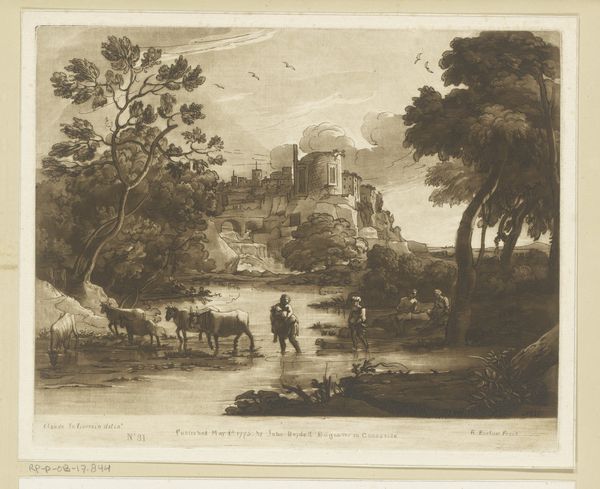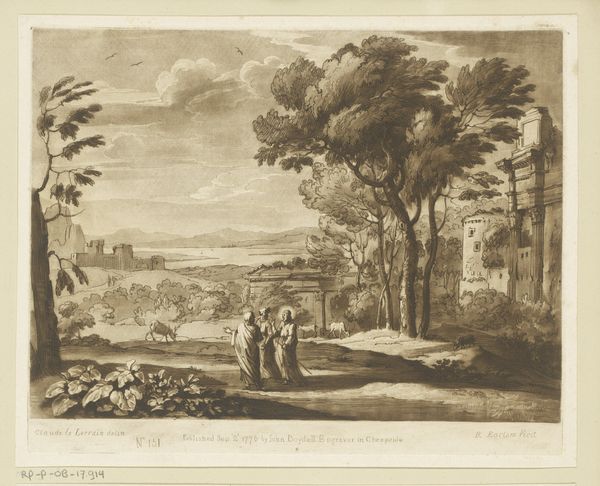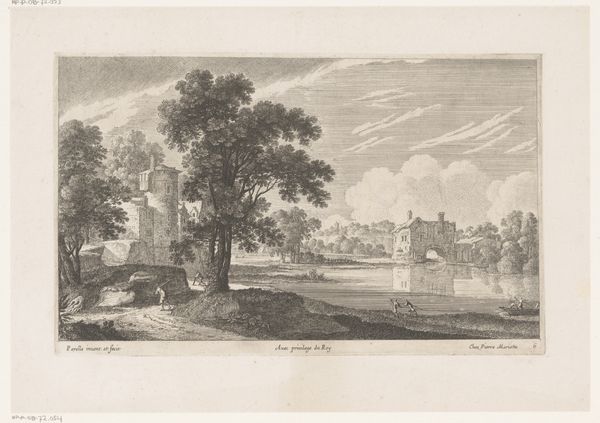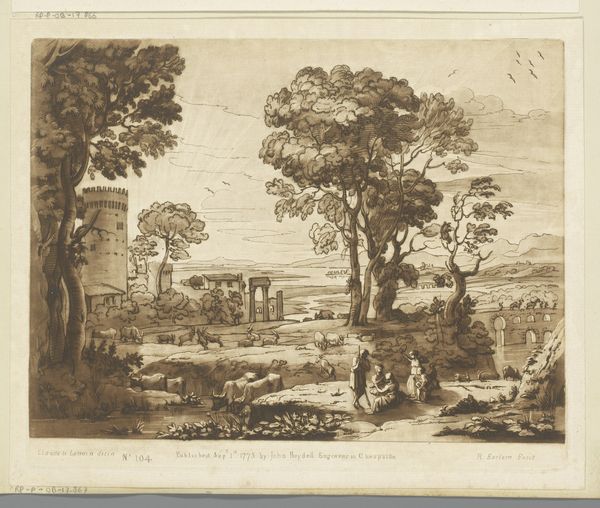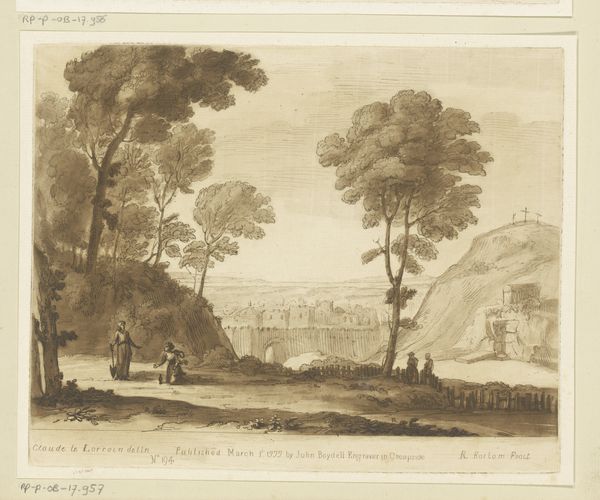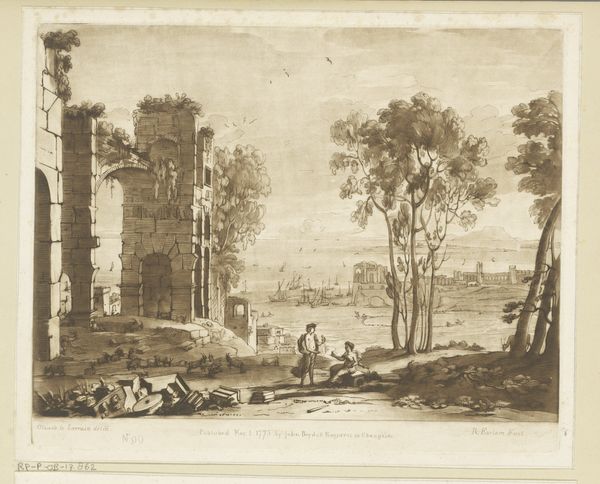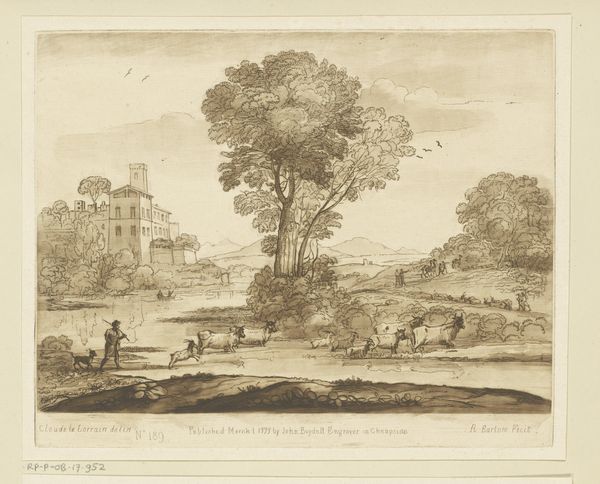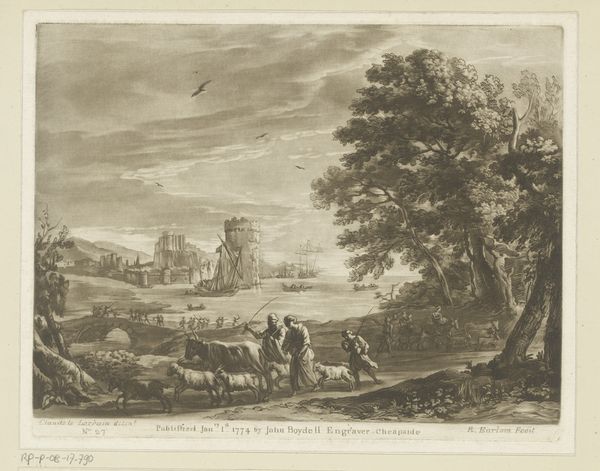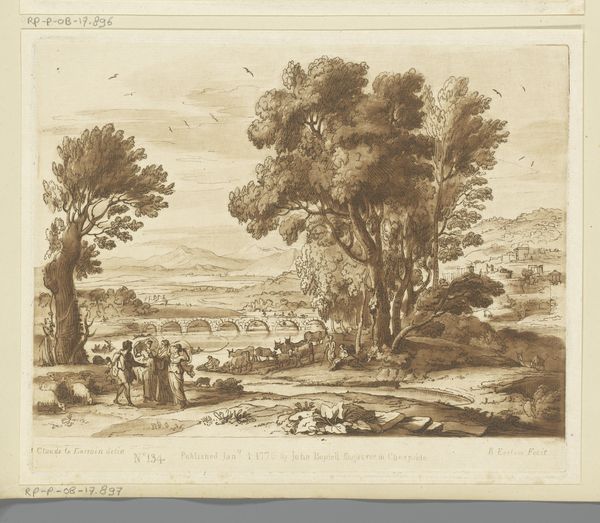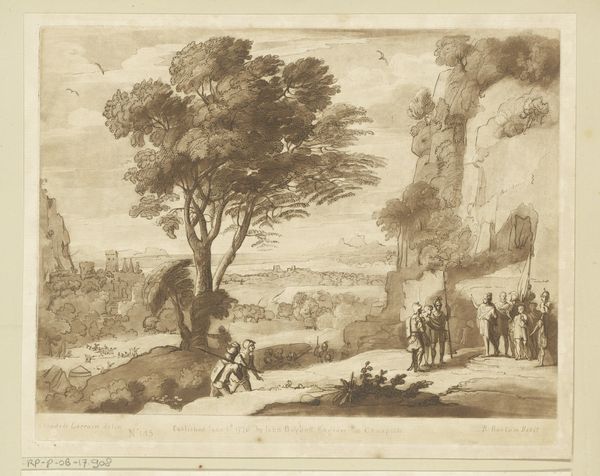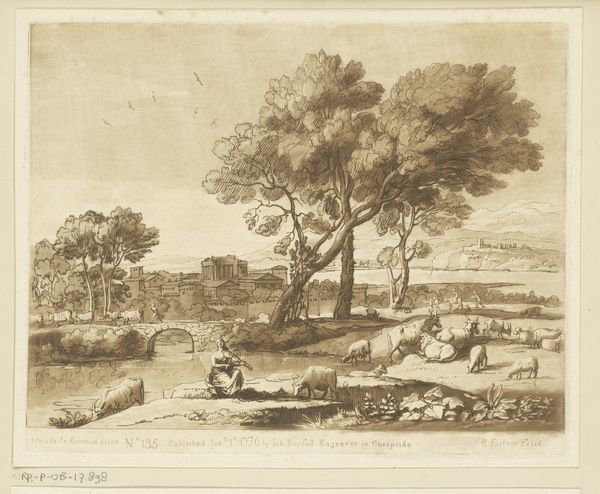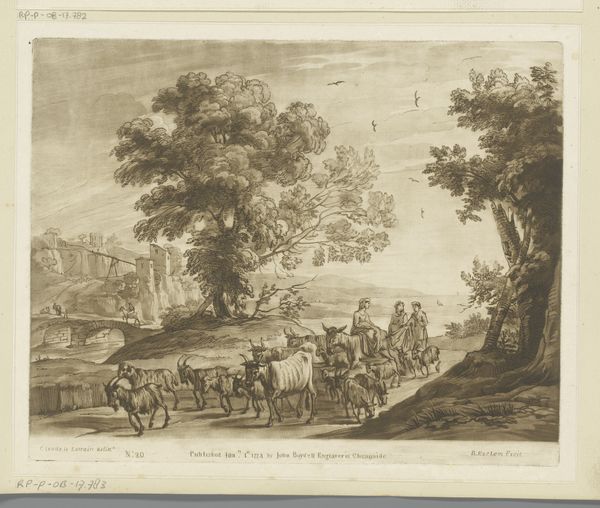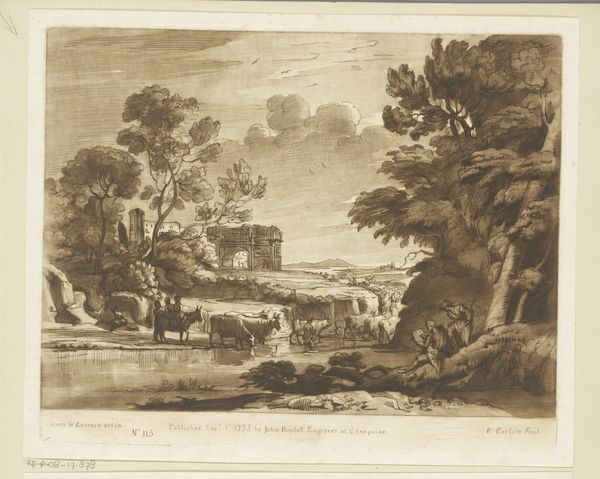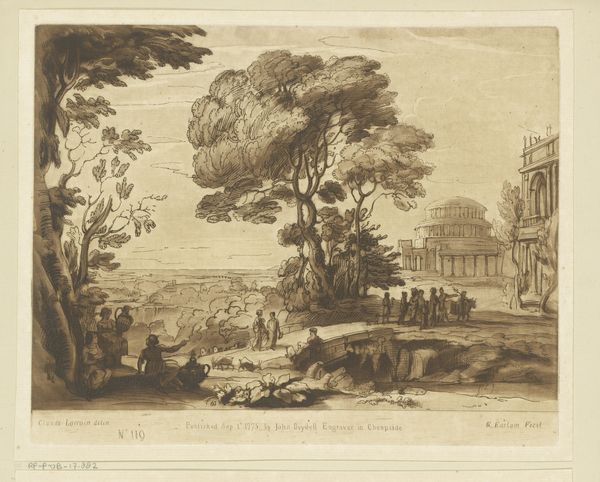
Landschap met Jacob, Laban, Lea en Rachel bij een kudde schapen Possibly 1776 - 1779
0:00
0:00
print, etching, engraving
# print
#
etching
#
landscape
#
etching
#
genre-painting
#
history-painting
#
engraving
Dimensions: height 206 mm, width 260 mm
Copyright: Rijks Museum: Open Domain
Curator: Here we have "Landscape with Jacob, Laban, Leah, and Rachel with a Flock of Sheep," an etching and engraving dating from 1776-1779, possibly by Richard Earlom, found in the Rijksmuseum collection. Editor: There's something profoundly calming about the tonal simplicity. It evokes a sense of pastoral harmony and quiet contemplation, even with the presence of multiple figures. The overall effect is one of soft serenity, almost like a dream. Curator: This work depicts a scene from the Book of Genesis, specifically Jacob's story with Laban and his daughters. The inclusion of figures from religious texts during this era allows for the examination of power dynamics related to land, labor, and family structures within a patriarchal society. Note that the familial scene exists within an open and classical landscape. Editor: The bridge, the distant architecture… They resonate with classical pastoral imagery. It reminds me of an idealized Golden Age, laden with visual symbols of stability and order. The sheep themselves could represent innocence, or a promise of future wealth. The very grouping of Jacob and the women—Laban, Leah, and Rachel— hints at cultural continuity, inherited responsibility. Curator: Absolutely, and when thinking about representations of the family, in terms of the dynamics of labor at that particular moment, or how such scenes uphold existing class structures, it gives way to new interpretations on questions around legitimacy, wealth and generational wealth. We must ask who is benefitting, and at what cost? Editor: Though at first glance, it is bucolic. But yes, you are right, once we bring awareness to class and ownership, questions arise. Those gentle sheep become a currency, a marker of success. This engraving is deceptively rich in potential interpretations. Curator: By looking beyond the obvious themes, we open up discussions around social and economical power structures within artistic productions of this era. The print becomes more than just a pleasant image of family harmony and nature, inviting an urgent conversation around societal frameworks. Editor: I am struck how a seemingly simple image holds so much history—personal and cultural—woven into the delicate lines of this etching. Curator: Indeed. And viewing the historical family allows us to address a wider discussion that's connected with political implications found within artwork.
Comments
No comments
Be the first to comment and join the conversation on the ultimate creative platform.
